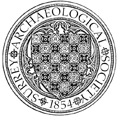Essex Society for Archaeology and History, Transactions
Submitted by Anonymous on
Essex Society for Archaeology and History

Submitted by Anonymous on
Essex Society for Archaeology and History
Submitted by Anonymous on
Architectural and Archaeological Society of Durham and Northumberland
Submitted by Anonymous on
Dorset Natural History & Archaeological Society
Submitted by Anonymous on
Devon Archaeological Society
Submitted by Anonymous on
Derbyshire Archaeological Society
Submitted by Anonymous on
Submitted by Anonymous on
Submitted by Anonymous on
Chester Archaeological Society
Submitted by Anonymous on
Submitted by Anonymous on